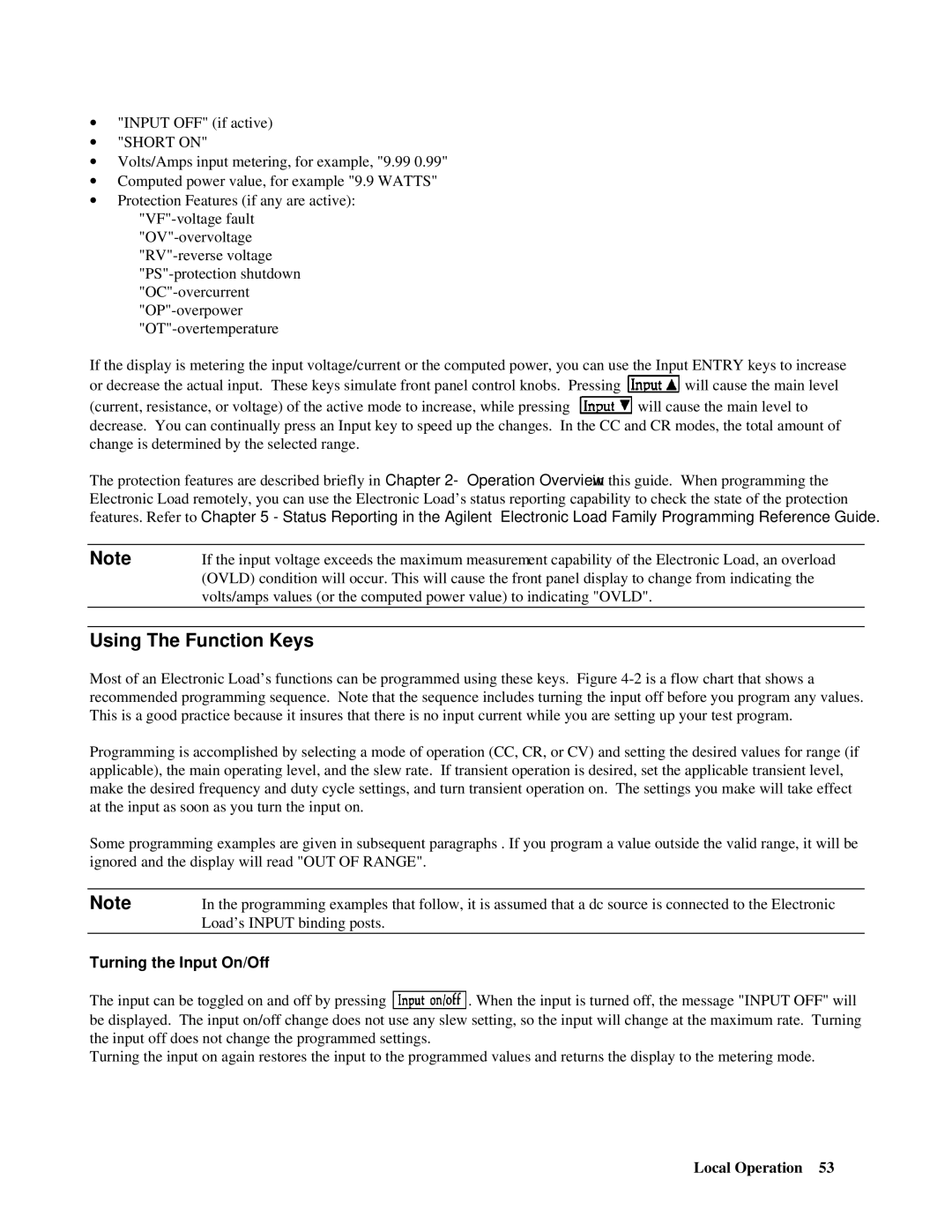
∙"INPUT OFF" (if active)
∙"SHORT ON"
∙Volts/Amps input metering, for example, "9.99 0.99"
∙Computed power value, for example "9.9 WATTS"
∙Protection Features (if any are active):
If the display is metering the input voltage/current or the computed power, you can use the Input ENTRY keys to increase
or decrease the actual input. These keys simulate front panel control knobs. Pressing ![]() will cause the main level
will cause the main level
(current, resistance, or voltage) of the active mode to increase, while pressing ![]() will cause the main level to decrease. You can continually press an Input key to speed up the changes. In the CC and CR modes, the total amount of change is determined by the selected range.
will cause the main level to decrease. You can continually press an Input key to speed up the changes. In the CC and CR modes, the total amount of change is determined by the selected range.
The protection features are described briefly in Chapter 2- Operation Overview in this guide. When programming the Electronic Load remotely, you can use the Electronic Load’s status reporting capability to check the state of the protection features. Refer to Chapter 5 - Status Reporting in the Agilent Electronic Load Family Programming Reference Guide.
Note | If the input voltage exceeds the maximum measurement capability of the Electronic Load, an overload |
| (OVLD) condition will occur. This will cause the front panel display to change from indicating the |
| volts/amps values (or the computed power value) to indicating "OVLD". |
|
|
Using The Function Keys
Most of an Electronic Load’s functions can be programmed using these keys. Figure
Programming is accomplished by selecting a mode of operation (CC, CR, or CV) and setting the desired values for range (if applicable), the main operating level, and the slew rate. If transient operation is desired, set the applicable transient level, make the desired frequency and duty cycle settings, and turn transient operation on. The settings you make will take effect at the input as soon as you turn the input on.
Some programming examples are given in subsequent paragraphs . If you program a value outside the valid range, it will be ignored and the display will read "OUT OF RANGE".
Note | In the programming examples that follow, it is assumed that a dc source is connected to the Electronic |
| Load’s INPUT binding posts. |
|
|
Turning the Input On/Off
The input can be toggled on and off by pressing ![]() . When the input is turned off, the message "INPUT OFF" will be displayed. The input on/off change does not use any slew setting, so the input will change at the maximum rate. Turning the input off does not change the programmed settings.
. When the input is turned off, the message "INPUT OFF" will be displayed. The input on/off change does not use any slew setting, so the input will change at the maximum rate. Turning the input off does not change the programmed settings.
Turning the input on again restores the input to the programmed values and returns the display to the metering mode.
